Today you will arrive at the Hosea Kutako International Airport in Windhoek, where you will be met by a representative of Namibia Tracks and Trails who will escort you to check in for your charter flight to the Namib Rand Nature Reserve. Further on, you will embark on your charter flight to Keerweder, where you will be met and transferred to the lodge by the lodge employees.
Upon arrival, you will be treated to a warm welcome, and should time permit we will recommend an afternoon activity at the lodge.
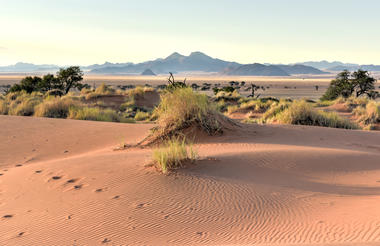
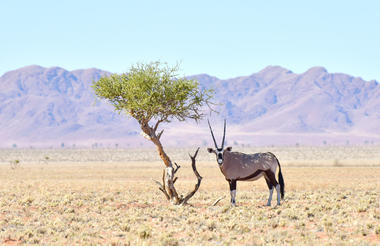
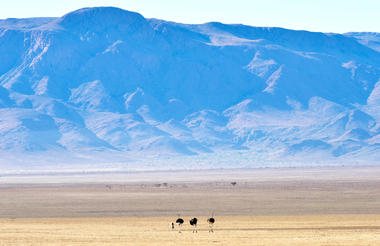
Afternoon lodge activity
Dinner and local beverages
After breakfast, you will depart bright and early on a scenic drive to Sesriem Canyon, you will be treated to an adventure to explore all that Sossusvlei and Deadvlei have to offer.
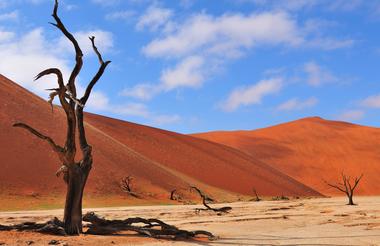
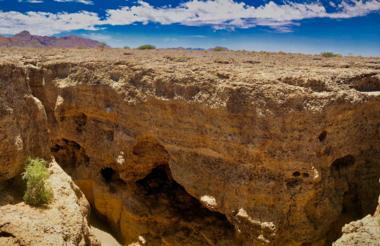
Today's excursion is out in the desert, where temperatures can soar up to 40+ degrees Celsius. In order to ensure minimal sun burn and discomfort, it is recommended to take along:
- a hat
- sunscreen
- water
- camera
Sightseeing at Sossusvli and Deadvlei and scenic drive to the Sesriem Canyon.
Today you depart for Swakopmund from Namib Rand. Today’s flight will give you a front seat to an unforgettable aerial view of the majestic dunes surrounding Sossusvlei. Best described as a rolling carpet of unending sand, decorated with the unique biodiversity that the desert holds is truly a scenic memory to keep.
As you proceed along the coast over Conception Bay, Sandwich Harbour, and its famous lagoon to Swakopmund, you will be spoiled with yet another wonder. You will have the rare opportunity to witness the beauty of contrasts of the ocean and the desert meet.
All this beauty on one flight will end with your arrival at the Swakopmund Airport, where a transfer company will drive you to your accommodation.
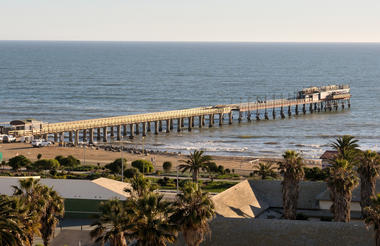
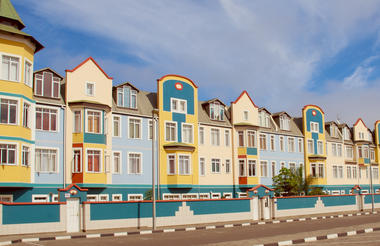
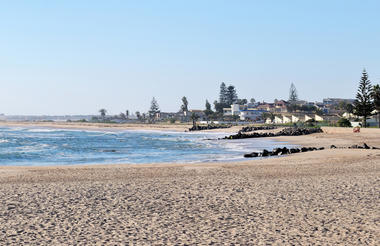
Today a transfer company will escort you from your accommodation to the Swakopmund Airport. Here you will board the small aircraft for your charter to Twyfelfontein.
On this flight you will witness the change in vegetation from one region to another, showing you the diversity in landscapes in Namibia. The transition from the sandy dunes to the robust mountainous surroundings brings you to one of the most extensive galleries of rock engravings in the world. In 1952 the valley of Twyfelfontein was proclaimed a National Monument and was also declared a UNESCO World Heritage site. The petroglyphs are found on a number of smooth rock surfaces which most of them depict animals and their tracks. Scientists have estimated their ages to vary between 1000 and 10 000 years.
Another pit stop to make is at the Organ Pipes located near Twyfelfontein. This fascinating geological formation is thought to be the result of the Gondwanaland breakup, fractures and cracks were formed as the dolomite columns cooled through the process of columnar jointing approximately 120 million years ago. Strikingly rich rusty colors are portrayed in long columns resembling those of a church organ, some rising up to 5m high.
The Burnt Mountain, a small inselberg, was also proclaimed a national monument on 15 September 1956. The reason for its name is best evident in the early mornings and late evenings when the rays of the sun seem to set the mountain ablaze. Rich red colors mixed with shades of black and purple are quite strikingly caused by Manganese coated clay molecules.
Near Khorixas lies the well-known Petrified Forest, a collection of fossil tree trunks declared a National Monument in the early 1950s. The fossil trees are between 240 and 300 million years old and were once driven as driftwood from westward flowing streams and deposited on sand banks. Today, the remains of at least 50 trees can be seen, which are so well preserved that they are often considered to be normal tree trunk.


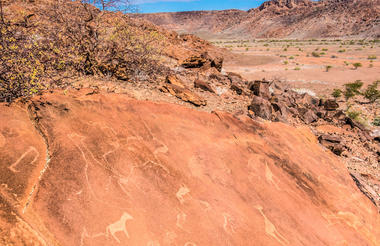
Today you will go in search of desert elephants in the Twyfelfontein area.
Namibia's desert-dwelling elephants are of high national and international conservation priority, and have been designated as top priority for protection by the IUCN (International Union for the Conservation of Nature). They live in the Kunene Region, encompassing 115,154 km2 of mostly sandy desert, rocky mountains and arid gravel plains in Namibia's northwest. They have adapted to their dry, semi-desert environment by having a smaller body mass with proportionally longer legs and seemingly larger feet than other elephants. Their physical attributes allow them to cross miles of sand dunes to reach water. They have even been filmed sliding down a dune face to drink at a pool in a desert oasis. They survive by eating moisture-laden vegetation growing in ephemeral riverbeds and with their ability to go several days without drinking water they are able to travel long distances to reach a water source.
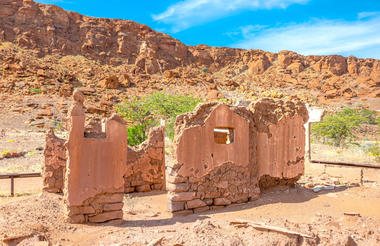
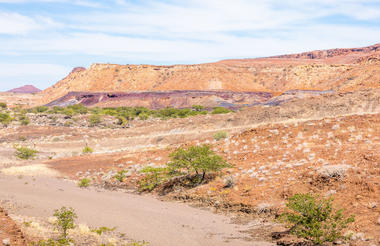
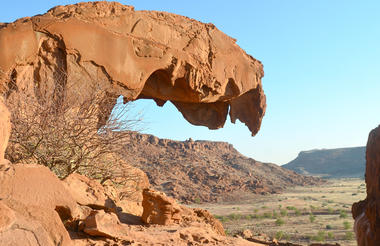
After breakfast you will be escorted to the airfield for your flight to a private game reserve bordering the Etosha National Park. Upon landing at Ongava’s private airstrip your rangers already await you and will transfer you to Ongava Lodge.
Should time allow, you will be treated to an afternoon game drive within the Game Reserve with an experienced guide.
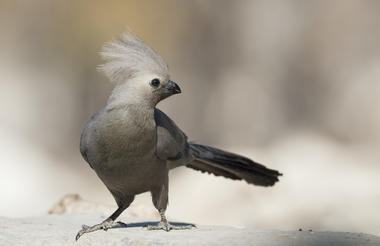
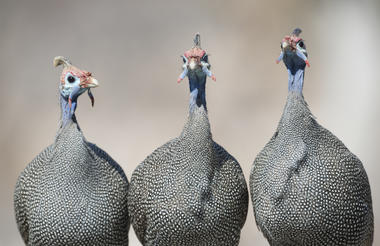
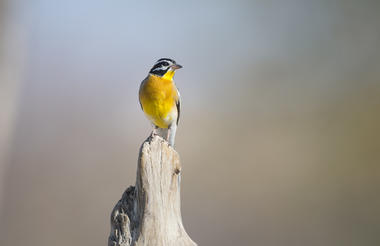
You will embark on a morning game drive in the Etosha National Park.
Etosha has dozens of waterholes, some are natural while others are artificially fed from boreholes. During the dry season, staking out a position at a waterhole viewpoint is a rewarding way to watch game without moving from one spot. A veritable 'Noah's Arc' of species queue up to take a drink, with elephants hogging the lion's share! Normal game such as zebra, wildebeest, giraffe, springbok, impala and eland abound in great numbers on the grasslands and congregate at waterholes in the dry season. Herds of fifty elephants are not unusual and often walk right down the middle of the road giving people in cars an incredibly close and thrilling encounter. Lions and hyenas must be searched for, but silver-backed jackals trot around almost oblivious to you. The desert dwelling oryx, upon which the mythical unicorn must surely be based, will certainly be seen here along with the impressive curly horned kudu. Etosha also contains endangered black rhino and unusual species like the black faced impala - a larger and darker subspecies found only in southwestern Angola and northwestern Namibia.
Etosha also boasts an absolutely wonderfully diverse birdlife with every kind of feathered friend.
After a light lunch and a siesta back at the lodge you explore the Ongava Reserve on an afternoon game drive.
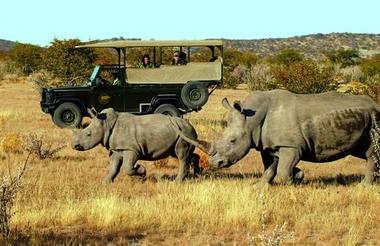
After a last morning activity & breakfast, the scheduled flight takes you to the Okonjima Nature Reserve, which is the home of the AfriCat Foundation, a non-profit organisation dedicated to the conservation and protection of Namibian predators.
At Okonjima Nature Reserve, you will be treated to an afternoon of leopard tracking. This ‘experience’ will take you out into the Okonjima Nature Reserve and will allow you to spend more time with our experienced guides and participate in the research data collection for our long-standing leopard project and newly introduced brown hyaena program. Some of our adult leopards are radio collared which enables the guides to track them with a specialized telemetry device contributing to frequent viewing, giving visitors an opportunity to observe these magnificent predators in their natural habitat and experience the fascinating behavior and interactions between these two species while they compete for food. Although this significantly increases the chance of an excellent sighting, it cannot ever be guaranteed as they are wild free-roaming predators.
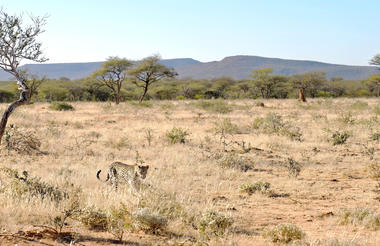
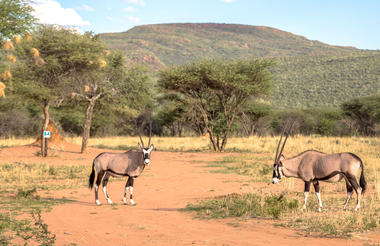
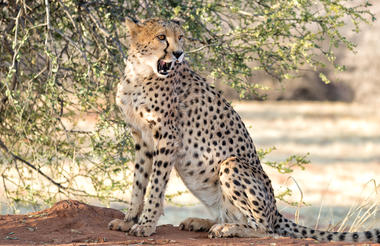
Leopard Tracking
Today marks the end of the safari. You will fly back to Windhoek in time for check-in on your outbound flight at Hosea Kutako International Airport .
Take care of all formalities and bid farewell to Namibia; we wish you a safe journey home.



